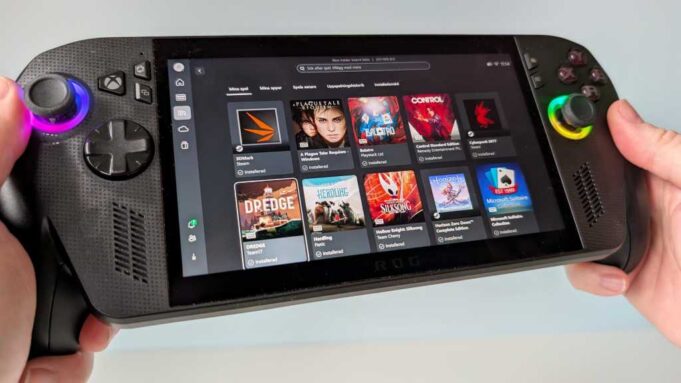The battle for handheld gaming supremacy just got a whole lot more interesting. Asus is throwing down the gauntlet with a new software update for the ROG Ally X, giving users unprecedented control over their device’s performance and battery life. This move could redefine how we approach PC gaming on the go, forcing competitors to innovate or be left behind.
The heart of this update lies in the ability to fine-tune the P-core and E-core settings of the AMD Ryzen Z2 Extreme CPU. For those not fluent in chip architecture, these are the Performance and Efficiency cores respectively. The update, delivered through the Armoury Crate driver management program, effectively hands the keys to power management over to the user.
Why does this matter? The Ryzen Z2 Extreme isn’t your average mobile chip. It boasts a hybrid architecture with three high-performance Zen 5 cores and five efficiency cores. This allows the Ally X to intelligently allocate resources, but until now, users had limited control over this process.
Now, Ally X owners can prioritize raw gaming power by pushing the P-cores to their limit, or extend battery life by leaning more heavily on the E-cores for less demanding tasks. As Tom’s Hardware points out, this is a game-changer for handheld gaming, where every watt counts.
The Fine Print: Exclusivity and Competition
There’s a catch, of course. This P-core/E-core control is currently exclusive to the Z2 Extreme chip found in the ROG Ally X. Owners of the standard (white) Xbox Ally or the original ROG Ally will miss out on this particular feature.
However, this doesn’t mean the party is over for everyone else. Asus is also rolling out other improvements, including an “improved gyro aiming algorithm” and a new 40 FPS limiter, designed to optimize the balance between performance and battery life across the Ally family. Details on all the changes can be found on the Asus ROG forum.
The bigger picture here is the evolving landscape of handheld PC gaming. Asus is betting that giving users more granular control will be a key differentiator. It’s a bold move that could influence the design and software strategies of other manufacturers.
Consider Lenovo, for example, and their competing Legion Go 2. Will they respond with similar features? The pressure is on. The race to deliver the ultimate handheld gaming experience is heating up, and consumers are the ones who stand to benefit.
Ultimately, this update signifies a shift towards more customizable and personalized handheld gaming experiences. It’s not just about playing games on the go; it’s about tailoring the hardware to your specific needs and preferences. If this trend continues, we can expect even more innovative features and user-centric designs in the years to come, pushing the boundaries of what’s possible in the palm of your hand.



